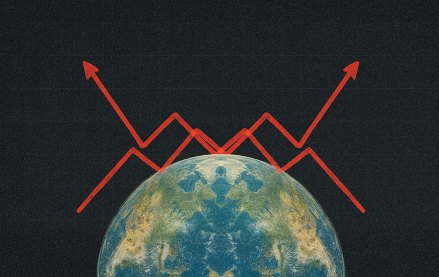Amazon courts media buyers with loss-leader tactics to compete with other major DSPs

Amazon Ads’s quest to become the first programmatic port of call for media buyers is intensifying.
It’s courting media agencies across the industry hoping that more will treat its demand-side platform (DSP) as their go-to programmatic provider. According to 11 media buyers who spoke to Digiday, its pitch to decision-makers emphasizes a refreshed user interface, CTV inventory, and, in select cases, financial incentives. Along the way, it hopes to expand its advertiser base to include more non-endemics.
While it’s far from winning over the industry, it’s gained media buyers’ attention — and likely that of market incumbents The Trade Desk and Google’s DV360.
Amazon’s offer to buyers
One agency buyer, who asked to remain anonymous, told Digiday the platform’s reps had made an unusual offer: for video investments made on behalf of new advertisers, including spend on Prime Video, the platform would offer an additional 10% worth of the client’s buy, up to a ceiling of $250,000. They told Digiday the offer was part of a broader pitch “pushing” Amazon DSP’s upper-funnel capabilities.
According to another anonymous media buyer, Amazon had reduced its usual “tech fees,” charges applied by a DSP when an agency uses its tech, in the last six months to induce agencies to spend more on its platform. The company showed “a healthy appetite to lower tech fees,” the buyer said. In this agency’s case, the fees had been cut to 10%.
Though rates differ among DSPs depending on the media agency involved (another media buyer told Digiday such fees could range anywhere between 3% and 15%), it’s a sign that, using the same loss-leader logic supermarkets apply to milk and bread, Amazon is content to slice its own margins if it persuades buyers and brands to entrust more ad spend with them.
“If you were going to make a decision between an individual DSP … Amazon eating some of the costs or fees or taxes would be a factor that would be relevant,” said Harry Inglis, head of activation at Media by Mother.
According to The Information, Amazon has also offered discounts to clients using Amazon Web Services to tempt them to spend more on ads.
An Amazon Ads spokesperson told Digiday in an email: “Amazon DSP helps advertisers reach an average ad-supported audience of more than 275 million in the U.S. alone. We’re focused on making Amazon DSP the best place to buy advertising through our continued innovation to increase efficiency and lower campaign management costs, while delivering outsized performance.
“By combining our trillions of purchasing, streaming and buying signals, diverse ad-supported properties, and advanced technology, we’re able to create meaningful connections between brands and customers that drive measurable business results at scale.”
Account services and UX upgrades
Amazon’s pitch has a human component, too. According to Leah Lam, associate director of brand media at indie media agency Collective Measures, staffers for the company had reached out to invite the agency to shift spend from non-endemic clients its way in recent weeks. Amazon had so many sales staff that the agency now had access to four reps within the company. “They are really going at it,” Lam said.
In fact, Amazon reps have been pitching hard to bring more “non-endemic” advertisers under its umbrella, hyping up Prime Video, Twitch, and Amazon’s first-party data offer — which is built on its market-leading commerce platform — as well as ads it doesn’t own.
“Amazon really would like us to be using them more on open web inventory,” said Matt Wilke, head of programmatic at Mediaplus U.K.
It also overhauled the user interface for its DSP in January, salving a longtime sore point for buyers who complained that its unintuitive design made it more trouble than it was worth. According to Noble People head of product John Gladysz, those improvements made it easier for smaller agencies to recommend the DSP to clients.
“They’ve been generally improving operationally. I think they still have some space to go,” added John Thankamony, managing director of addressable media and total commerce at Dentsu U.K.
Amazon’s core priorities
Each of these elements serves Amazon’s broader strategy: attracting new brands, increasing existing clients’ spending, and attracting as many small business advertisers as possible.
The company’s loss-leader tactics in the DSP market (which echo its success in driving down streaming CPMs) mark it out as the most aggressive of the big three DSP providers, but it’s not the only one making moves.
The Trade Desk is currently the “workhorse” DSP for many clients, said Inglis. Its headstart in the CTV space – it’s the gateway to Netflix and Disney+ for many advertisers, a status it’s building on by developing a CTV operating system – is “one of their big unique selling points,” Inglis said.
The company has also been emphasizing the quality of audience targeting data available via its partnerships with retail media networks, according to Dominic Johnson, associate director of brand media at Collective Measures, who cited sales materials sent to his agency.
By contrast, buyers told Digiday they’d had little communication from Google. Johnson said, “I don’t think we’ve ever heard from anyone at Google saying, ‘Hey, do you want to talk about our DSP?’”
What media buyers really care about
Most media agencies use two or three DSPs for their programmatic buying, assigning one as a “primary” and others “secondary” status, explained Ryan Eusanio, svp, video and programmatic at Omnicom Media Group. Though buyers might have their favorites, they’ll typically choose a DSP based on how their innate capabilities, like DV360’s access to YouTube, The Trade Desk’s depth of CTV inventory, or Amazon’s commerce data, match a client’s needs.
Buyers also consider the inventory on offer, the quality and depth of targeting options, pricing, and customer service. “You see a big difference across partners in terms of how they lean in,” said Delia Marshall, president of Eicoff, a performance agency that’s part of WPP’s Ogilvy network.
All of which means that if Amazon wants to carve out more of the advertising market for itself, it’ll need to go through media buyers.
It’s a fortunate time to make a move. Google is currently awaiting a historic legal judgment that could bisect its business, while grumbles about The Trade Desk from holdco media experts have become louder since the ad tech firm’s recent earnings miss.
Meanwhile, advertisers are scrutinizing every part of their budgets amid an uncertain economic environment, including costs associated with ad tech. “They’re paying more attention than they used to,” said Gartner analyst Eric Schmitt.
“Amazon, a few years ago, was a performance DSP,” said Jonathan D’Souza-Rauto, biddable product lead at agency Kepler. Its efforts to invite more brand dollars, however, are paying off. Two in three U.S. advertisers now use Amazon’s DSP, and usage rose 18% between March 2024 and September 2024, according to a survey by Advertiser Perceptions.
The firm still faces challenges convincing buyers to abandon The Trade Desk and Google. For one, Amazon’s utility for advertisers that don’t sell through its e-commerce mart or want to run broad brand-building campaigns isn’t settled.
Forrester analyst Nikhil Lai said the company’s executives aim to prove it can “credibly” help advertisers in either of those camps. “Everything they’re doing is in service of moving upstream and trying to capture more brand dollars and activating non-endemic demand,” he said.
The Trade Desk did not respond to requests for comment by time of publication.
More in Media Buying

In Graphic Detail: What to expect in media in 2026
Programmatic mix will broaden, while AI investment will both drive ad investment and steal focus from other marketing priorities.

As industry anticipates AI search ads, buyers scrutinize Google’s AI Max
Media buyers report mixed results with the AI-powered search ads toolset.

AdsCopilot offers agencies an AI overlay at no cost
It functions as a real-time, AI-powered assistant directly within the user’s web browser, overlaying and interacting with existing ad platforms that media agencies use.







